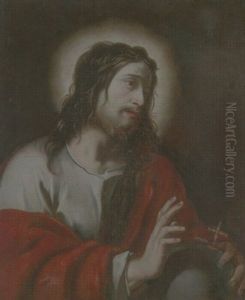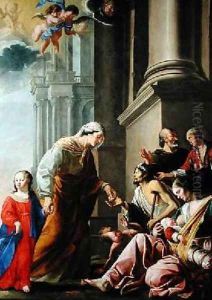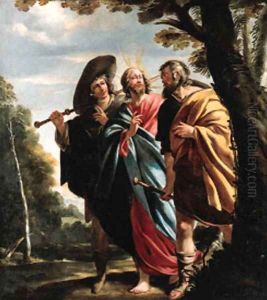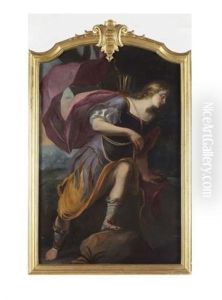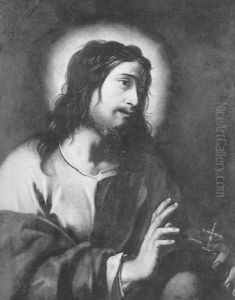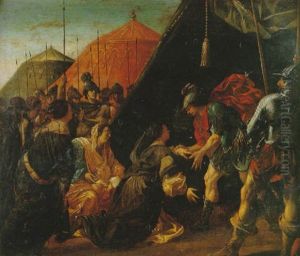Jacques de Letin Paintings
Jacques de Letin was a French painter and engraver born in 1597 in Troyes, Champagne, France. He is primarily remembered for his contributions to the Baroque movement, which was characterized by its dramatic use of light and shadow, rich colors, and intense emotionality. De Letin's early life is somewhat obscure, but it is known that he developed a profound interest in painting from a young age, likely influenced by the artistic environment of his hometown and the broader cultural renaissance occurring in France during this period.
After honing his skills, de Letin embarked on a journey to Italy, a common practice among artists of his time seeking to study the works of Renaissance masters and to experience the burgeoning Baroque style firsthand. This trip proved to be pivotal in shaping his artistic direction. He spent significant time in Rome, where he was exposed to the works of Caravaggio and his followers. The dramatic chiaroscuro and emotional intensity of Caravaggio's paintings left a lasting impression on de Letin, elements that would become hallmarks of his own work.
Upon returning to France, Jacques de Letin established himself in Paris, where he became part of the city's vibrant artistic community. His paintings from this period often depicted religious and mythological scenes, characterized by dynamic compositions, dramatic lighting effects, and a keen attention to detail. His ability to convey complex emotions and his sophisticated use of color distinguished his work from that of his contemporaries.
Despite his talents, de Letin did not achieve the same level of fame as some of his peers during his lifetime. Nonetheless, he was respected among his fellow artists and patrons for his contributions to the development of the Baroque style in France. Beyond painting, de Letin also explored engraving, which allowed him to disseminate his designs more widely and contributed to his posthumous recognition.
Jacques de Letin's legacy is somewhat overshadowed by the more prominent figures of the Baroque era, but his work remains an important part of the movement's history in France. Today, his paintings can be found in several French museums, where they continue to be studied and admired for their emotional depth and technical mastery. De Letin passed away in 1661 in Paris, leaving behind a body of work that, while not as widely known as some of his peers, significantly contributed to the richness of French Baroque painting.
